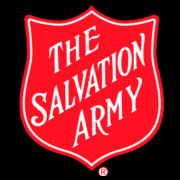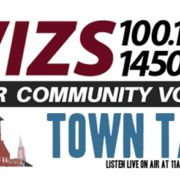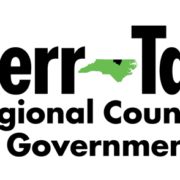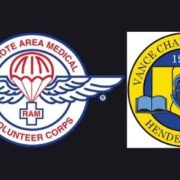The Northeast Piedmont Chorale is scheduled to perform two free concerts this weekend; the first one is in Raleigh and the second will take place Sunday afternoon right here at McGregor Hall in downtown Henderson.
A number of chorale members call Henderson home, including the group’s director, Cindy Edwards. Edwards, along with fellow Henderson resident and chorale baritone Tom Burleson joined chorale president Judy Miller on Wednesday’s Town Talk.
They talked with John C. Rose and Bill Harris about the upcoming performances, as well as what goes on behind the scenes to make their concerts special. The local performance is Sunday, May 1 at 3 p.m.; the first concert will be on Friday, Apr. 29 at 7:30 p.m. at New Hope Baptist Church in Raleigh.
The theme of these concerts is “Home Is Where the Heart Is,” and it celebrates our nation’s history through a selection of musical renditions that highlight the arrival of the first European settlers to Lincoln’s Gettsyburg Address, as well as some familiar folk tunes – all sandwiched in between two iconic songs to begin and end the concert: “America the Beautiful” and Irving Berlin’s “God Bless America.”
Edwards said the seeds for this theme were planted back in the fall of 2019, with plans for a May 2020 performance. Since it was an election year, the planners had settled on a patriotic theme. “But we know the rest of that story,” Edwards recalled, when the COVID-19 pandemic shuttered theaters and cancelled performances across the globe.
Edwards said it was the opening song, “America the Beautiful,” that served as a catalyst for her and others to create the complete list of songs to include.
The particular arrangement that the chorale will perform includes narration, full orchestral accompaniment and a cappella, “which really shows off the voices” of the chorale members.
The order of the songs is intentional, she said, to tell the story of what Americans have experienced, from early settlers crossing the ocean with “Song of the Tall Ship” to Neil Diamond’s “America.” The concert uses music to portray moments in this country’s history.
The “America” piece is arranged almost exactly as Diamond performed it, she explained, but this rendition will be done with a choir, an electric bass, synthesizer and electric guitar.
The chorale members are a dedicated group of individuals that take seriously practice and rehearsals as they prepare for performances. But Miller, the chorale’s president, said the group is lucky to have Edwards as its director, citing her talent, commitment and drive which serve to make the chorale even better. “As Cindy tells us, preparation doesn’t start and stop at rehearsal,” Miller said.
As Burleson pointed out, a performance takes a lot of preparation and he said his mind has to be engaged from the beginning to the end. “The last two (songs) are as important as the first two,” he said, which requires a performer’s full attention throughout the concert. He is a relative newcomer to the chorale and said he has been impressed with the high level of professionalism among the chorale members.
Being a member of the chorale, in whatever capacity, requires dedication and commitment. And money. Members pay a small tuition to be a part of the group. But Edwards said that shows “that they love music and they want to perform it, and they are willing to commit to rehearsals and practice.”
And when that effort is combined with the talent that the chorale members possess, “it is a beautiful process,” Edwards said.
Miller said the group’s camaraderie only complements the talents of the individuals. “We sing together and perform together,” she said, “and the love of music comes through.”
Miller said Edwards reminds the group that if they really feel the music as they are singing, that feeling is conveyed to the listening audience.
It’s not just the voices of the singers that are needed for a performance – the musicians that provide accompaniment are an important part for a successful concert. Kristen Allred accompanies the chorale on piano.
“She’s been a real asset to the chorale,” Edwards said. “She does a beautiful job playing – her role is to know every note, to be able to follow the director…play the parts and to provide that support, that foundation.”
Other orchestra members also are band directors at area schools and some play at DPAC – indicating the high level of professionalism in the orchestra. “It is an inspiration to play with them because they have done their preparation,” Edwards said.
This performance will include an unusual instrument for several selections – banjo and guitar will be played by local musician Wayne Kinton.
Concertgoers are sure to recognize those songs as they are performed, including “Shady Grove,” “Shenandoah” and “Get Along Home Little Cindy,” all representative of a time when settlers were moving farther and farther West and exploring the new land that would become known as the United States of America.
One selection from Gustav Holst’s ‘Jupiter’ from The Planet Suite will be dedicated to the people of Ukraine, she said.
“This is a song that a lot of people will recognize.”
Learn more about the Northeast Piedmont Chorale, including how to make a tax-deductible donation, at https://www.npchorale.org/









